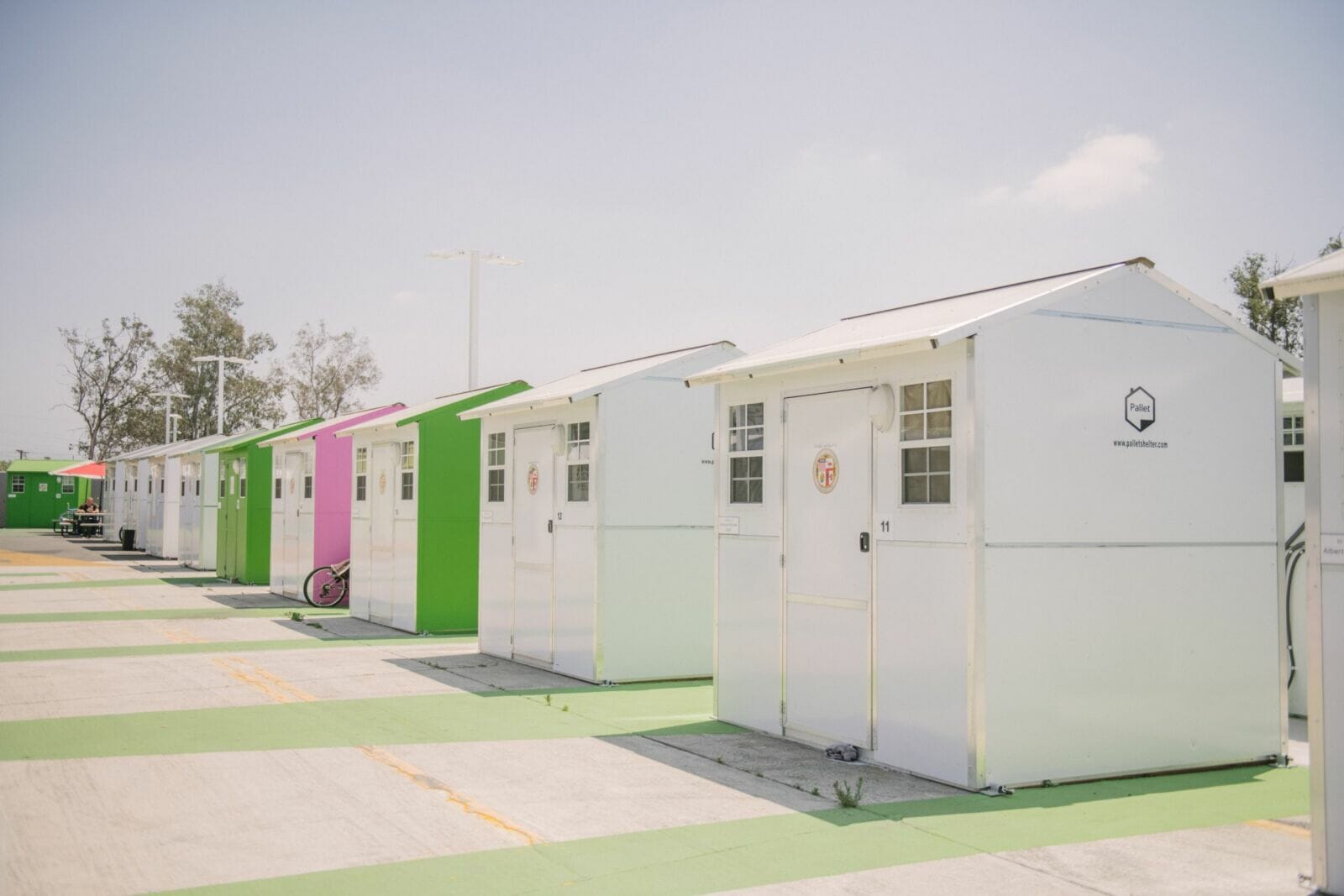TUCSON — For years, J Kristin Olson-Garewal was getting increasingly concerned about the growing number of homeless people walking Tucson’s streets and sitting in its parks.
DEEPER DIVE: Homeless encampments would be torn down, people charged under Arizona Senate bill
Her son, Raj Garewal, worked in a homeless service center in Los Angeles, dealing with an even more overwhelming homelessness problem. But where Tucson seemed to have no answers, Garewal showed his mom a video of tiny houses that could be set up in only 45 minutes and were starting to address homelessness in California cities.
After watching this video, Olson-Garewal, who is also a physician, realized that this straightforward method of assembling houses — called Pallet shelters — could be a solution to a problem that she sees as inhumane and only getting worse.
“We talked to people who were working with homelessness and city officials. No one was doing anything, and nothing was being done on the scale needed to correct the enormous housing shortage, so we simply decided to do this,” Olson-Garewal said.
In August 2021, Olson-Garewal and her son started The Homing Project. The organization plans to construct a small village of 64- or 100-square-foot shelters that can be assembled in a matter of hours.
The Homing Project is one of two nonprofit organizations in Tucson trying to address a growing unhoused population that is affecting cities across the state. Arizona’s homeless population grew 23.4% between 2020 and 2022, according to a 2022 report by the U.S. Department of Housing and Urban Development. Arizona’s homeless population in 2022 was estimated to be 13,553 — 59.2% of whom were unsheltered.
In Pima County, which includes Tucson, the overall number of people experiencing homelessness on a single given night rose by 21%, from 1,372 in 2019 to 1,660 in 2020, according to tucsonaz.gov.
Olson-Garewal said The Homing Project plans to house 20 people at first, mostly individuals, as a trial to work out any bugs and get data about costs and any other problems, should they arise.
Each of the shelters will have heating, cooling, insulation, one or two beds in single units, windows, a self-contained solar energy system and a secure locking door. Shared facilities in the yet-to-be-constructed shelter village will include dining, laundry and bathrooms; and the community will be gated. If ever a house is not needed, it can be disassembled and flat-packed for storage.
Olson-Garewal said the project is being funded entirely through private donations and foundation grants.
“The land is a free-long term lease,” she explained. “Our projected budget is $1.4 million to start and run the trial village for a year. We rely on volunteers a lot; we currently have over 100, of which about 40 are very involved.”
Currently, the organization plans to focus solely on Tucson, but hopes to keep opening sites as resources allow, with the most being about 100 units. Not only do they plan on creating housing for the homeless, they plan on providing other services as well.
“Our onsite partner, Catalytic Health Partners, will focus on treating any condition holding them (residents) back and will help people get job skills, which will equip them to earn a living wage so that they will not be living paycheck-to-paycheck, one emergency away from missing the rent payment,” Olson-Garewal said. “Eventually, we may start a second phase of truly tiny homes or apartments.”
The organization is aware of other cities and states utilizing this method of housing, and Olson-Garewal has even visited some of them. Pallet, based in Washington state, boasts it has deployed its team to construct 3,800 cabins — comprising more than 100 shelter villages in 21 states and more than 85 cities. Many of the villages are in California, but the company lists Pallet villages in states as wide ranging as Wisconsin, South Carolina and Vermont. Pallet does not yet have any shelters in Arizona.
“We visited a few of them in California, and there found that the biggest problems are not addiction and/or mental illness but simply lack of housing. When they set up their programs in California, they planned a three- to six-months stay to treat any condition, help each resident get a job and then permanent housing,” Olson-Garewal said. “But then they found there was no housing to transfer them to. So we are starting this project anticipating that people may be in this housing for two to four years.”
Another organization in Tucson that is focusing on helping the homeless community is the Casa Maria Soup Kitchen, which is part of the Catholic Worker Community founded in the city in 1983. Brian Flagg, community worker for Casa Maria, has been a part of the soup kitchen since its founding.
“We think the key to doing social justice is community organizing — getting to know the people that are affected in your part of the world and talking to them,” Flagg said. “So our thing is to organize among the people we serve and in the neighborhood we live in, and right now it’s to deal with the housing crisis and the gentrification of downtown neighborhoods in Tucson.”
Flagg said the organization relies entirely on private donations. It has started a campaign to raise $7 million to buy half a dozen Tucson motels that it plans on turning into 350 units for people in need.
So far, Casa Maria has purchased one 20-unit hotel known as the El Camino.
“It’s at the absolute low end of the rental market in South Tucson, and Tucson too, so really the whole metropolitan area,” Flagg said. “It’s like the lowest rung of affordable housing, and it’s going to remain, those 20 units, and we’d really like to add to it.”
The immediate plan is to make improvements to the hotel, which includes adding kitchenettes into the units. Flagg said the main focus is to lower the rate of homelessness in Tucson.
The Arizona Department of Economic Security said that of the 13,553 homeless persons counted in the state in January 2022, there were 2,227 in Pima County, or 16.4% of the state total.
Flagg sees the problem of homelessness only getting worse, especially in Tucson.
“It can be traced to rents; rents have gone up,” Flagg said. “What’s really needed in Tucson — and I assume the whole state of Arizona — is rent control.”
In the community where the soup kitchen is located, there’s a medical clinic that also operates from within the kitchen as well as a county center located across the street that aims to provide aid for those in the homeless community.




